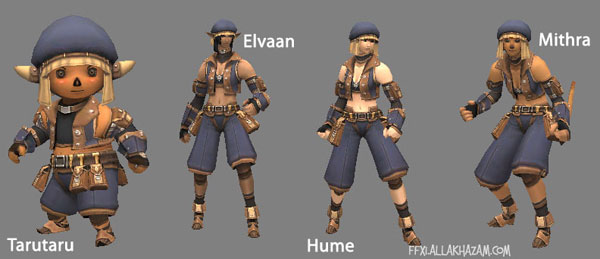

Final Fantasy VIII is dated, even with its spiffy new remaster. We wouldn’t recommend playing it as your first game, though. The same is now true for Final Fantasy VIII. All of the mainline games above and below it have received ports or remasters for modern consoles.

We’re happy that Square Enix is finally showing VIII some love, too. While Final Fantasy VII introduced 3D models, Final Fantasy VIII significantly refined their designs so we could see Squall (one of the best leading protagonists) and friends in better detail. The planet - a futuristic set of five landmasses based on Europe - had a level of detail we hadn’t seen in a Final Fantasy title thus far. All of these gameplay changes worked in incredibly interesting ways, allowing players to choose how they wanted to approach the experience. Throw in a neat collectible card game and a radically different scaled leveling system, and Final Fantasy VIII felt like the first really bold step in a new direction. The biggest change, however, was the increased emphasis on summoning. The new junction system replaced armor and other accessories for customization, and each main character had a set weapon that drastically affected their combat style. We’ll never forget Final Fantasy VIII, which reinvented the active time battle wheel without completely abandoning the series’ roots. Time brings perspective, though, and that’s true for Final Fantasy VIII. With a remastered version on PS4, Xbox One, Switch, and PC, now’s a perfect time to give it a shot. Because it’s so weird, VIII never lived up to the legacy set by VII and VI, despite being one of the most unique games in the series. That’s a big reason why we love it and why it’s slotted so high on this list. You can play it now on PC, Android, and iOS.įinal Fantasy VIII is probably the weirdest and boldest entry in the Final Fantasy franchise. Final Fantasy VI may very well be the best turn-based RPG ever made. While it may sound bad that Square hasn’t bested Final Fantasy VI in the 25 years since its launch, it’s really a testament to FFVI’s staggering greatness. Everything in Final Fantasy VI, from the story to the combat systems to the world, is made for a nearly flawless Final Fantasy experience. Robust customization features, including unique magic spells, a modified summoning system, and a wealth of weapons, made the traditional active time battle system feel like a constant joy. This level of freedom was astonishing at the time.

But the back half of the game opened things up, allowing you to complete objectives and dungeons in a nonlinear order. The linearity of the first half allows these characters to grow, to let you build connections with each one - an impressive feat considering there are roughly a dozen major players on your side. The first half introduces the cast, from the compelling starting protagonist, Terra Branford, to the rebel treasure hunter Locke Cole - all of whom want to take down the Empire. Perfectly paced, Final Fantasy VI achieved such high levels of narrative impact because of its setup. This is where high fantasy became the stuff of legend, and magic was replaced by scientific advances and the burgeoning technology from the Second Industrial Revolution. It featured a stellar cast of more than a dozen characters and ushered in the steampunk-style world design that would carry over to the PlayStation games in the late ’90s. Originally released in North America as Final Fantasy 3 (yes, it’s confusing), Final Fantasy 6 was the last 16-bit mainline entry. If you’re just getting into Final Fantasy, though, where do you start? Most Final Fantasy games are at the very least good, while many are great - and others are masterpieces which is why we decided to rank all of the best Final Fantasy games.įar and away the best mainline Final Fantasy game, 1994’s Final Fantasy VI is an absolute triumph in every sense.
FINAL FANTASY XI ARMOR SERIES
Now, many of those same titles in the Final Fantasy series live on the Nintendo Switch and other consoles alongside newer RPGs series. From there, the series made an incredibly successful jump to 3D on the PlayStation 1 before the mainline series started to take more risks, including the elimination of turn-based battles and massively multiplayer online game (MMO) entries. The fantasy Japanese RPGs debuted on the Nintendo Entertainment System (NES) in 1987, but they became cultural touchstones in the ’90s as Super Nintendo games. Yes, we’re talking about Final Fantasy from Square Enix. While the role-playing game (RPG) has become a catch-all genre, now encompassing an almost silly range of games that don’t share much in common, there was one video game franchise in the 1990s that was the quintessential RPG.


 0 kommentar(er)
0 kommentar(er)
